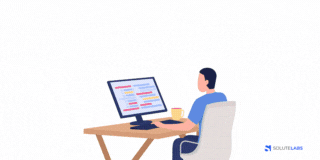No significant new product that swept through the marketplace was ever built in a day. All the success stories out there have gone through a multi-stage process – one in which a germ of an idea matured into a fully functional product.
The new product development process usually encompasses four broad operational categories: creation, testing, launch, and commercialization. In this blog, we break this process down further and explain the seven essential stages that you must follow to achieve a favorable result.
What is New Product Development?
While the stages mentioned above are true for every type of product development, it is all the more relevant in the case of creating a new product, i.e. one that breaks new ground, enters untested spaces, and provides solutions with a fairly pioneering approach. The product could be simple or complex, but it must address an unresolved gap or drastically revamp the process in an existing area. It can be about making routine procedures easier or creating new concepts to resolve issues.
Remember, either way, new product development means entering uncharted territory – it is filled with uncertainty, there is a high possibility of failure, and yet, reaching the goal can deliver significant success.
7 Stages of New Product Development Process
Clearly, in such situations, the path from concept to launch can rarely be a straight line. Nevertheless, it is good to follow a linear model for navigation.
The following seven steps outline the contours of that road map:
Stage 1: Identifying Pain Points & Solutions – Brainstorming and Ideation.
Stage 2: Shortlisting the Preferred Option – Zeroing in on What Works Best.
Stage 3: Concept Testing – a Preliminary and Limited Validation.
Stage 4: Assessing Business Potential – how well it can help in Growth.
Stage 5: Developing New Product – Building the Tech Solution.
Stage 6: Collecting Market Feedback – a Trial Run to Verify a Market Response.
Stage 7: Launch and Commercialization – Executing a well-planned Strategy to introduce your product
We present below a more detailed explanation of new product development stages.

Stage 1: Identifying Pain Points and Possible Solutions
First, you should assess what could be best described as a ‘Consumer Wish List’.
- What are the most acute problems they commonly face?
- What routine processes need to be simplified?
- Which critical pain points are more widely experienced among the target segment?
- Which of these seems solvable?
You could use a mix of brainstorming to gather impressions from members of your leading team and idea generation based on actual data from either internal or external sources. Correlate the outcomes of the two processes. Also, look at product reviews, customer ratings and so on. These often provide valuable indications of what consumers wish for. Toss around possible solutions.
It is important to remember that you should not get bogged down at this stage, only looking for ideas that immediately seem feasible. Go to the very edge of the frontiers—think-out-of-the box. The wider you cast the net, the more likely you will come up with a match-winner!
Implementing a customer-centric approach in the new product development process can significantly increase the chances of success of a company's product development strategy .
Stage 2: Shortlisting / Choosing the Frontrunner
Now the task gets a little more challenging. You must organize and analyze the information you have collected once you have developed the product ideas. Arrange the ideas in some logical fashion. Rankings could be based on how big a gap the potential product would fill; whether it is an urgent need or something that consumers will take time to get hooked on; how complex the technological processes envisaged are, etc.
Get multidimensional viewpoints: the technical feasibility, the marketing angle, different aspects of consumer psychology, a cost analysis, etc. All this will help you prioritize where and how you utilize your resources.
Stage 3: Testing Concept
It is time to do a series of rounds to help validate your selection. During this stage, the new product development process will move back and forth - from the realm of ideas to the world of products. It will involve -
- Detailing the Solutions
- Developing very Basic Prototypes
- Testing for Flaws
- Judging Responses from Potential Consumers
- Reviewing Cost Estimates
and so on.
The new product development team should lead this round. It should be constituted with highly trusted personnel who bring a blend of technical and market-oriented knowledge and skills to the table. The work should be conducted within a relatively closed circle. If and when concept validation requires getting opinions from outside, the external referees should be carefully selected.
Be firm, even ruthless, in identifying weaknesses and flaws. Go back to the drawing board often. You move forward when you are fully convinced that you have a multi-faceted assessment. The next stage starts when you finally take a call on which of the potential options are suitable to be taken ahead and which have to be abandoned, for now at least!
Stage 4: Assessing Business Potential
This is the final stage before the die is cast! It is time to weigh your concept/product against the harsh realities of the outside world to develop a strategy to release it into the market. In basic terms, it is similar to a cost-benefit analysis but involves much more.
Begin with the product. Assess its effectiveness, positioning to appeal to the target audience and whether you would offer multiple variants or a single model.
Then move forward carrying out a similar exercise in the case of your pricing strategy.
- What would consumers be willing to pay for the services provided?
- Should there be a uniform product and price approach, or is it better to have entry-level and premium variants catering to different segments?
These are examples of some of the questions you need to answer.
Other aspects of the marketing mix should also be considered:
- How will your product be packaged and promoted?
- How will the key consumer communications be framed?
- How will the product be distributed among the target audience?
- Will you follow a single-channel or omnichannel approach at retail?
Your conclusion on the business potential will have to be based on a combination of all these assessments.
Stage 5: Developing New Product
Now it is time for the techies to come to the forefront. They have to turn the learnings of the earlier stages into a functional application – preferably one that is simple and easy to use. Begin with a UI/UX prototype to get initial buy-in from all relevant stakeholders and take it forward from there.
Modern tools such as AI-assisted IDEs can accelerate this stage by reducing development cycles and improving accuracy. Learn more in our article on AI-Assisted IDE Product Engineering.
It would be good to define the approach to developing a new product. You have a choice between beginning with introducing a basic model and gradually ramping up the capability and capacity of your product with add-ons or holding back the introduction into the market till you have a relatively rounded-off model, which will have few upgrades during the first phase of its life cycle. In both cases, the move to the next stage will depend on the strategy you adopt.
Suggested Read
How to Build an MVP for Your Mobile App?
View Blog
Stage 6: Feedback and Fine-Tuning
Most new products are put through an initial introductory run in the marketplace. The launch should cover a relatively wide base in quantitative terms, which could be restricted to a specific segment, spread across a defined geography or disseminated to a 'by-invitation-only' target group. In the latter option, you could permit first-level invitees to extend the invitation to a fixed number of their contacts to ensure a certain element of randomness in the final sample.
The aim is to collect feedback from actual consumers and, based on it, finetune the product to smoothen out rough edges. If you have been sufficiently diligent in the earlier stages, the market's inputs should not throw any significant shocks. Yet, this exercise is essential in refining and polishing the product before its full-scale launch and subsequent commercialization.
Stage 7: Launch and Commercialization
Now, you have a final product that is ready for the market. You need to plan carefully to maximize the impact when you initially Go Live. Have your marketing team chart out the strategies to achieve high levels of visibility when the product is first introduced. Similarly, chart the approach for the following few expansion and growth stages. Remember, marketing is a critical component in commercialization and ensuring that your offering turns into a viable product within a reasonable period. Good campaigns can catapult a functional product into orbit; conversely, a poorly planned launch can send it into a fatal tailspin.
Suggested Read
Should a Startup Outsource Software Development
View Blog
Conclusion
Like all other areas of technology, product development is being impacted by contemporary developments in digital engineering – machine learning and advanced big data analytics. They enable exciting innovations across diverse areas related to predictions, quality control, personalization and more. Yet, the core principles of the new product development process will continue to hold good, perhaps further enhanced by using these new tools over time.
If you want to bring your innovative design and development ideas and projects to market, SoluteLabs can be your trusted partner. We have years of experience in product development, and we are committed to helping you succeed. With our innovative, scalable, and reliable product development approach, you can take your business to new levels of proficiency.
Our company specializes in creating tailored solutions that meet the needs of our clients, who come from a variety of sectors. We take into account their business processes, goals and objectives, challenges, to make sure we deliver an effective product with optimal customer satisfaction. Contact us today to start with your path of innovation.






